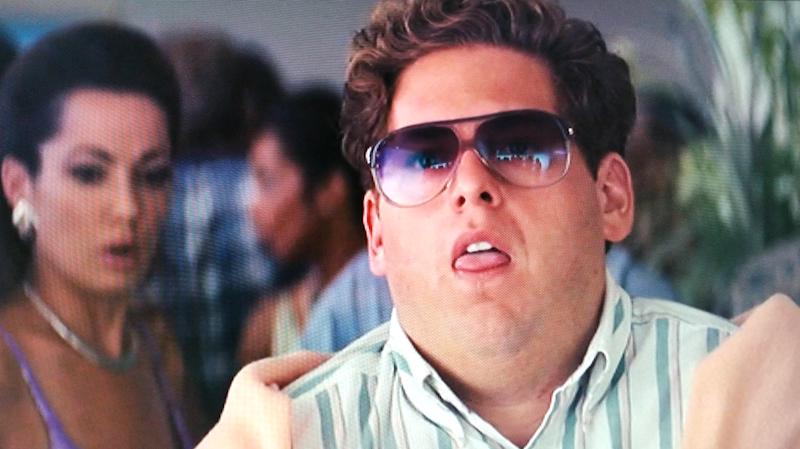He puts the mental in experimental!
If you surf in Southern California, you’ve probably seen Matt Parker’s Album boards around. Influenced by his art school background, his boards are distinctive. If you want a plain-wrap clear board, I’m pretty sure he’ll make you one, but his aesthetic tends toward the bold.
Parker started shaping for the usual reason — to make himself a board — and got hooked on the practice. He’s self-taught and build his first 20 or so boards entirely with hand tools. Currently, Album builds boards of every shape and size you can dream up with a mix of hand and machine shaping. Lately, Parker’s been experimenting with asymmetric designs and he’s a fan of the way the things ride.
Here’s a short interview for your enjoyment.
What was the first board you ever had?
I didn’t get my first board until I was twelve or thirteen. I think I was in the sixth grade. And I got this 6’6” Rockin’ Fig 80s style shortboard that I think my parent’s got at the flea market or something like that. I was like, obsessed — I got it for Christmas and I was obsessed with it. It was magic though! It had glass-on fins and cool airbrush. And I was like wow. It was made out of fiber glass. It was just — I was kind of blown away by it.
I grew up like half-an-hour inland. In California. I grew up in Orange, California, going to Newport to surf. But the idea of where surfboards came from was always kind of this mysterious thing, because I was always on the outside a little bit. There was only — there was maybe five or ten kids in my school that surfed. Seeing surfboards and being around that, was, I wasn’t right at the bubble of it, so it had a little extra magic about it.
Why did you start building boards?
The first board I shaped, I think I was 25. My background is art and and I’d gone to school for graphic design. So the idea of making a board, I didn’t seem all that insurmountable to me. It was just like making a painting or sculpture or something like that.
Back then — I mean, it wasn’t that long ago, I guess it was 20 years ago — but the boards you would see on a rack in a surf shop, there wasn’t a whole lot of variety. Shortboards, fun boards, and longboards — and maybe the occasional fish here and there. There was a lot of uniformity.
So I was like, “I want to surf something a little different.” So I made this 6’1.” It was like a performance board, a thruster, but it kinda had a little wider tail and a wider nose — and elements of those boards I liked in the 80’s as a kid. And modern rails — I was trying to make, you know, modern rails. I’m sure if I looked back now, I would gasp a little bit. But it did work. It came out somewhat looking like a surfboard.
Do you still have it?
I didn’t keep it that long. Right after I made it, I surfed it for a month maybe, I really got the bug to make another one. So I went and put it on consignment at Surfside Boards in Newport. And someone, amazingly! bought it. I remember when they called me, and I was like, really? Somebody bought that thing? Maybe it’s still floating around somewhere. Maybe someone is still riding it.
What designs are you really excited about now?
So the last four or five years, I’ve been making a ton of asymmetric boards. There’s huge potential in those. Playing around with those has been very addicting.
Your back foot just sits right on the sweet spot that makes a board pivot and turn. It’s just a really unique sensation. They don’t feel like you’re jumping on something that feels weird. They get more out of your board on lesser days and they have a really wide range where they’ll work when waves are good, too.
I’ve been making a couple little models for Josh Kerr. It’s been really validating, because he’s surfed them well in all sorts of waves. I made this little board called The Insanity. It always has an ‘80’s beak nose. It has a fishy entry rocker, but the original one I made for him was a 5’6” pintail that he surfed all over Hawaii: 5’6” x 18 1/2 x 2 5/16. It has a little fuller fishy foil to it, so it’s this little pocket rocket pintail.
Aesthetically, your boards don’t look like what anyone else is doing and I like that. It’s nice to see something that’s not the cookie cutter thing.
That’s what’s so funny, you know. A surfboard shouldn’t have rules as far as those things go. We can make whatever we want! Yet, there tends to be a little bit of conservative outlook in how they should look, you know. It kind of comes down to a little bit of that outsider perspective I had as a kid.
There’s so much that goes into the hierarchy of surf spots — in terms of where you fit in and your ability to get waves. It’s dependent on how people perceive you. Understandably, people kind of want to fly under the radar.
You’re putting yourself out there. You’ve got a real chance of putting a big target on your back that you’re kind of a kook. It’s easier to fall in line and follow the herd a little bit. For me, it’s like come on, it’s surfing. We’re trying to do like, water ballet on surfboards out in the water. We can’t take it too seriously.
We’re all looking for that little magic board that’s going to make us surf the way we think we can surf, right?






